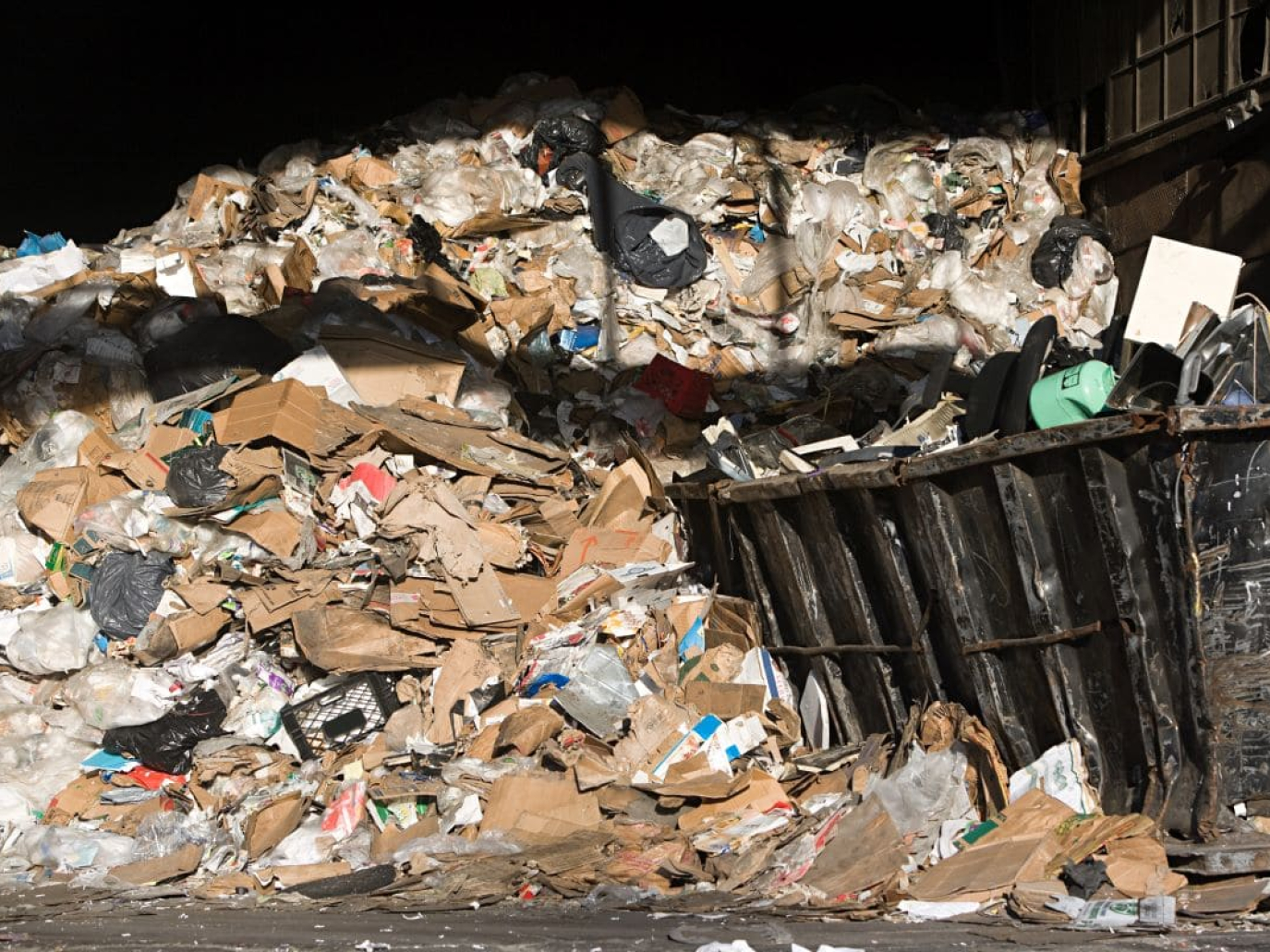This article is also available in Italian / Questo articolo è disponibile anche in italiano
Beginning to write this year’s Circularity Gap Report, we were driven by a simple question: why, despite so much effort and innovation, is global circularity steadily declining?
Year after year, we’ve watched the Circularity Gap grow while material use soars to new heights. This year’s iteration concludes that circularity—measured as the share of secondary material use out of the total—has dropped to a new low of 6.9%, down from 9% when we launched the first Circularity Gap Report in 2018. This is in spite of a slight growth in secondary material use, offset by the growing global extraction of virgin materials. Without rewiring deeply entrenched modes of production and consumption, attempts to scale up recycling will be endlessly outpaced by swelling consumption, leaving a truly circular economy just out of reach.
Our report, launched at this year’s World Circular Economy Forum in São Paulo, warns of the severe consequences of stripping Earth’s natural materials—and emphasises that we must expand our perception of circularity beyond recycling. Global extraction has more than tripled in the last half century, bringing us past a landmark threshold of 100 billion tonnes annually. Without reversing current trends of production and consumption, this is set to rise by 60% by 2060. We need new levers to pull to improve material management at the global level.
So, where do we go from here? The Circularity Gap Reports have always held firm that a speedy global transition to a circular economy can deliver the deep reductions in material use necessary to reverse the overshoot of our planet’s safe limits: this means shifting to a system where waste is designed out, products and materials are kept in use for as long as possible, and nature is regenerated through the use of renewable, non-toxic materials. But doing this requires a macro-level understanding of how materials are currently contributing to circularity, or how we’re squandering their value and generating waste across their lifetime.
We intended this report to serve as a bird’s-eye view of the state of global circularity, scoring various aspects of the transition across a range of indicators. It reveals a wellspring of unleveraged potential, opening up the business case and risk mitigation potential of the transition—and highlights just what needs to change for the circular economy to move off the page and onto the global stage.
Nearly one-fifth (18.1%) of global material use is represented by virgin, largely non-renewable materials destined for landfill: think heavy industrial wastes, vehicles and construction materials reaching their end-of-life—and yes, the consumer goods we collectively toss in the bin each year, although these are minuscule in comparison. If all these materials were diverted from landfill and instead transformed into secondary materials, we found that global circularity could theoretically swell to 25%—but we must also note that a large portion of this is made up of waste from mining and quarrying, such as waste rock and soils.
These lower-value materials are difficult—and costly—to recycle, emphasising the importance of extraction methods that minimise waste in the first place, alongside better managing easy-to-recycle waste streams. There’s significant potential to improve recycling rates for municipal solid waste, for example: global collection rates average around 80%, but only 15% makes its way back into the cycle, the report found.
More than one-tenth (13.3%) of global material use is fossil fuels combusted for energy—inherently incompatible with a circular economy, as emissions released into the atmosphere cannot be captured or reused at the speed, scope and scale necessary to limit warming to 1.5-degrees.
Decarbonisation is part and parcel of a resource-light circular economy: the current system is sustained by a constant flow of fossil fuels, while a system built on renewables—although initially material-intensive—will cut material use in the long run. While we are scaling up renewables, total energy demand is also rising: and we’re becoming less efficient, with global average energy use per person increasing by over 10% in the last two decades.
We need to tackle this to ensure that the renewable energy transition replaces—rather than supplements—fossil fuels. At the same time, demand is also surging for numerous critical raw materials essential to the energy transition—marred by human rights abuses and severe environmental impacts of their own. A circular economy approach that shortens supply chains, optimises how these materials are used and eventually recycled, and minimises waste will be essential.
Nearly one-quarter (23.7%) of global material use is the biological matter we use for food, feed, and fuel. As the bioeconomy gains traction around the world, we must issue a warning: biomass being renewable is not synonymous with being sustainable. The way we use biomass at the global level is currently a major blindspot: while the majority (90%) of this is likely carbon-neutral—a bare-minimum proxy we use for sustainability—numerous other environmental impacts go uncaptured. The 10% already surpassing the threshold for carbon neutrality puts us in the danger zone: without overhauling land management practices and conservation efforts, this is set to worsen, with compounding effects on soil health and biodiversity in addition to climate.
The upsurge in interest in the biobased materials market is set against the backdrop of the ‘age of extinction’, with collapsing wildlife populations nearing the point of no return. Currently, around half the world’s habitable land is used for agriculture—with 80% of this dedicated to livestock, which provides a far smaller share of the global calorie supply. The way we farm, rear livestock, and grow fuel crops could contribute to a circular economy if we rebalance global land use and prioritise regenerative farming practices—but we’re far off from this being the case.
The lion’s share (38%) of global material use pours into long-term stocks: buildings, infrastructure, heavy equipment and machinery, and vehicles represent the vast majority of this category. Stocks offer a vast well of potential. If designed for a circular economy now, they can stay in use for longer and be ‘mined’ for materials when they reach their end-of-life years down the road.
Currently, buildings globally last an average of 54 years, and vehicles just 17 years (compared to EU averages of 87 and 21 years, respectively): there’s significant potential to improve this through better management, circular design, and material recovery at end-of-life as stocks continue to grow year on year.
This is incredibly pertinent given the rate we’re depleting stores of critical resources, many of which will remain essential for the construction of buildings and infrastructure and manufacturing of machines and electronics. Being mindful of the types and quantities of materials used for stock—largely non-metallic minerals (approximately 87%) and metals (approximately 10%)—and their potential for high-value reuse is critical to ensure stocks contribute to—rather than hinder—the global circular economy transition.
While the report centres on indicators to guide the transition, we mustn’t fall prey to indicator tunnel vision: increasing the rate of secondary material use is important, but so is better-managing stocks, switching material sources, and designing differently—all of which have a significant impact on circularity.
These actions must be matched by deep reductions in virgin material use across the board. Ultimately, the impact of material use must be made visible in mainstream sustainability discussions and gain traction in policymaking—not just as an environmental concern, but as a clear economic opportunity and a way to manage global risk.
While the circular economy is gaining ground—especially in Europe—the stakes are rising everywhere, regardless of political direction. Without global coordination, we risk positive efforts remaining piecemeal. Governments looking to spearhead the transition should work to incentivise circularity in their own countries while collaborating on the global stage—while frontrunning businesses should take action now to stay ahead of the (inevitable) regulatory curve and reap the benefits circularity has to offer.
If there’s one thing we want readers to take away from this year’s Circularity Gap Report, it’s this: all economies—across regions, sectors and supply chains—depend on materials. This dependency comes with risk, but also with opportunity. By introducing a wide set of indicators, we've endeavoured to make this connection clearer—giving businesses and governments the tools they need to understand their own state of circularity and seize the economic, social and environmental benefits it offers. The time for half-measures is over; the path forward is circular.
Cover: Envato image




